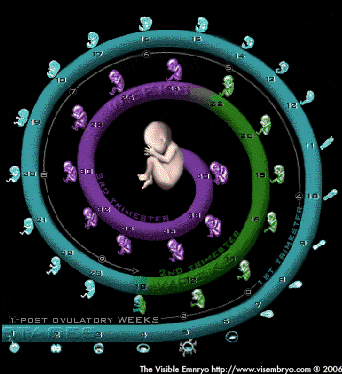Disclaimer: The Visible Embryo web site is provided for your general information only. The information contained on this site should not be treated as a substitute for medical, legal or other professional advice. Neither is The Visible Embryo responsible or liable for the contents of any websites of third parties which are listed on this site.
| Home----History-----Bibliography-----Pregnancy Timeline-----Prescription Drugs in Pregnancy---- Pregnancy Calculator----Female Reproductive System----News Alerts----Contact | |||
| Scientists measure. They measure circumference, length, weight, and anything else to do with the subject being studied. This is the only way to "see" what is not first seen by the naked eye. This is how to capture information that might be missed by simply looking or, possibly, by having a pre-existing idea of what that thing should look like or how it should work. Writing down every descriptive detail imaginable helps avoid the pitfall of pre-existing ideas determining how the subject being observed exactly looks and acts in a given moment. The Carnegie Institutions' Department of Embryology reflects the search for such facts in human embryology. Over the decades leading up to the foundation of Andrew Carnegie's Institution for scientific discovery in 1902, hundreds of embryologic specimens had been collected by doctors and sent to the Johns Hopkins Medical Institute in Baltimore, Maryland. By 1913, the Carnegie Institutes affiliated with the Johns Hopkins University and began a long process of classifying these specimens into a picture of embryonic development in very early pregnancy. The Carnegie Stages system of classifying embros began. It is used by embryologists to describe approximately the first nine weeks of pregnancy. Carnegie Stages are numbered from 1 to 23 based on internal and external physical characteristics of the embryo. By stage 23, all essential internal organ systems are present but are incapable of sustaining independent life. The hallmarks of change described in each Carnegie Stage give molecular biologists aid in their search for patterns of chromosomal differentiation.  |
 |
|
| Disclaimer: The Visible Embryo web site is provided for your general information only. The information contained on this site should not be treated as a substitute for medical, legal or other professional advice. Neither is The Visible Embryo responsible or liable for the contents of any websites of third parties which are listed on this site. |
||